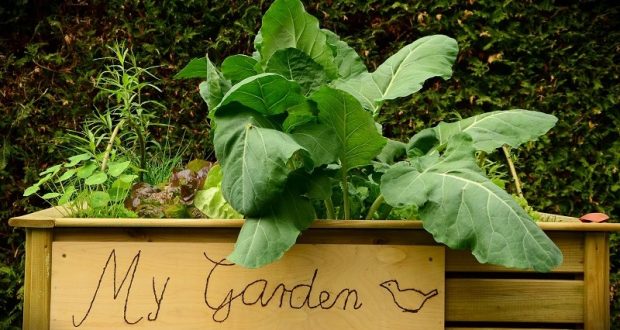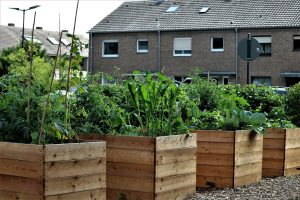By Bob Labozetta, UC Master Gardener, Mariposa
Raised garden beds generally yield more produce than traditional gardens. What’s more, the tools needed to build and maintain raised beds can be limited to a garden fork, a rake, a shovel, and a hand trowel.
The goal is to create a bed of loose, fertile soil that you never step on. The size of the bed matters—you want to reach the whole bed without stepping on the soil.
Like much in life there is more than one way to skin a cat (or form a raised bed).
The Quick Fix: One approach is to mark out 3-4 foot beds and, using a sturdy garden fork or iron bar, loosen the soil as deep as you can to aerate and loosen the soil so it can hold oxygen and water at root level.
The soil will be a few inches higher than the surrounding compressed earth. To prevent erosion, line the perimeter of the beds with planks or logs. Mix in a 3-inch layer of compost into the top six-to-ten inches of soil.
The Trench n’ Mound: This approach works well after freshly rototilling an area. It doubles the depth of useable topsoil for planting. Simply dig a trench around the intended garden plot and pile the dirt onto the bed. As above, mix finished compost into the extra soil.
Double-Digging Raised Bed Gardening is initially labor-intensive but results in deep, friable soil and need only be done once. Dig a 1-foot-deep trench across one short end of your marked area, putting the soil at the opposite end of the planned bed for later use. Loosen the soil in the bottom of the trench as deeply as possible.
Fill the pit with grass clippings, kitchen scraps, leaves, manure, moldy straw (not hay), or compostable material. Then dig an adjacent trench to the same depth, tossing the removed topsoil on the first trench’s organic material. Repeat that process for each adjacent trench. Place the soil from the first trench on the last dug trench. Line the bed with boards, logs, rocks, or leave it mounded.
The Traditional Raised Bed: Build 3-to-4 feet wide boxes with 2” x 12” redwood or cedar planks. Fill the box halfway with local topsoil and finish filling the box with good garden soil and compost. Growing a cover crop the first fall or winter will add nutrients and organic material.
It’s time to plant and mulch around the plants to hold in moisture during the hot summer days.
UC Master Gardeners of Mariposa County serve Mariposa County, including Coulterville, Greeley Hill and Don Pedro. For gardening and event information, call us at 209-966-7078 or email mgmariposa@ucdavis.edu. Find us online at http://cemariopsa.ucanr.edu/Master_Gardener, on Facebook (UC Master Gardeners of Mariposa County), and on YouTube at “UCCE Mariposa”. Listen to us on KRYZ 98.5 FM radio Wednesdays at 2 p.m. and Saturdays at 5 p.m.






